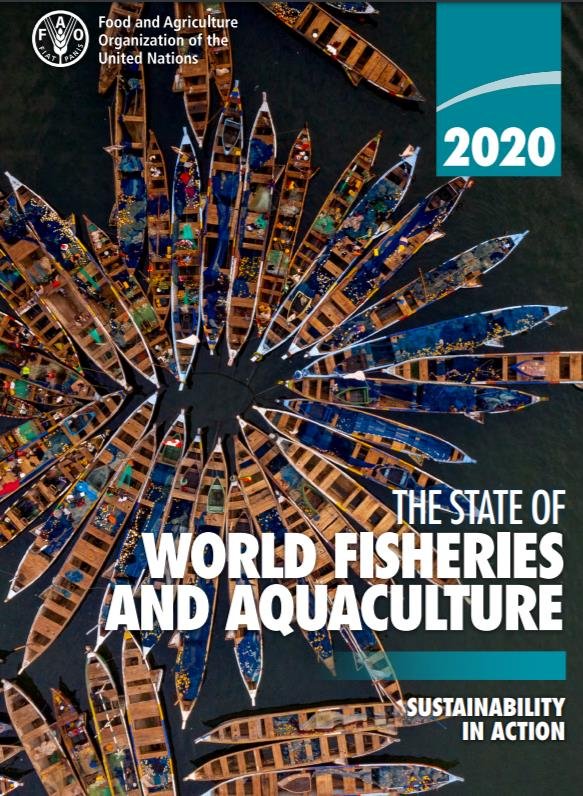- Share this article
- Subscribe to our newsletter
State of the World's Fisheries and Aquaculture
Worldwide per capita fish consumption has reached a new record of 20.5 kilograms per year, according to this year’s edition of the report State of the World's Fisheries and Aquaculture (SOFIA), published by the Food and Agriculture Organization of the United Nations (FAO) in June 2020.
Total fish production is set to increase to 204 million tonnes in 2030, up 15 per cent from 2018, with aquaculture's share growing from its current 46 per cent, says the report. That growth is around half the increase recorded in the previous decade, and translates into an annual fish food consumption forecast to reach 21.5 kilograms per capita by 2030.
Some 34.2 per cent of fish stocks are now fished at biologically unsustainable levels, according to SOFIA's benchmark analysis. This overall measure is too high, and is not globally improving, although it is welcome to know that 78.7 per cent of all fish landed come from biologically sustainable stocks.
Furthermore, sustainability trends for many major species are improving. Catches of all kinds of tuna reached their highest level, about 7.9 million tonnes in 2018, and two thirds of the these stocks are now fished at biologically sustainable levels, a sharp increase of 10 per centage points in just two years, and testament to intensive fisheries management in a sector marked by a high-value commodity and by significant overcapacity among some fleets.
The impact of the COVID-19 pandemic on fisheries and aquaculture
While SOFIA is based on information before COVID-19, the baseline information it provides is already helping FAO respond with technical solutions and targeted interventions for fisheries and agriculture, which is high among the sectors most impacted by the pandemic.
As a result of restrictions and labour shortages due to the health emergency, global fishing activity may have declined by around 6.5 per cent according to an addendum to SOFIA published by FAO.
The disruption of international transport has impacted particularly on aquaculture production for export, while greatly reduced tourism and restaurant closures have dramatically impacted distribution channels for many fish types. Nevertheless, retail sales have remained stable or increased for frozen, canned, marinated and smoked fish with a longer shelf life. In parts of the Mediterranean and the Black Sea, more than 90 per cent of small-scale fishers have been forced to stop due to an inability to sell their catches, often exacerbated by falling prices.
Input markets, migrant labour issues and risks linked to crowded fresh markets all impact fisheries output and consumption, with informal supply chains under greater stress due to the absence of contractual relationships and established cold chains.
(FAO/ile)
Read more at FAO website
Visit the website of the report State of the World's Fisheries and Aquaculture (SOFIA)
Rural 21, Issue 3/2015: Sustainable fisheries and aquaculture





Add a comment
Be the First to Comment